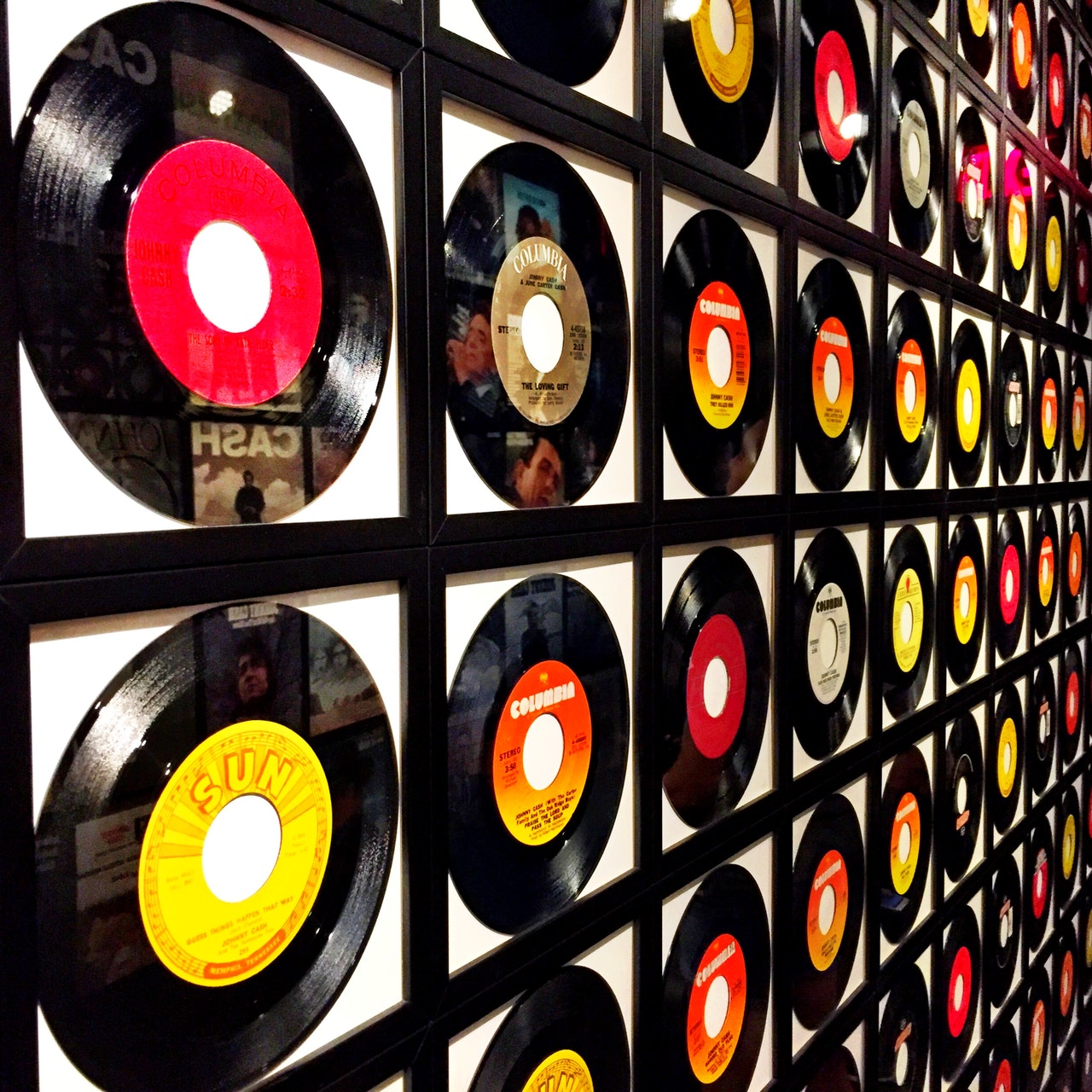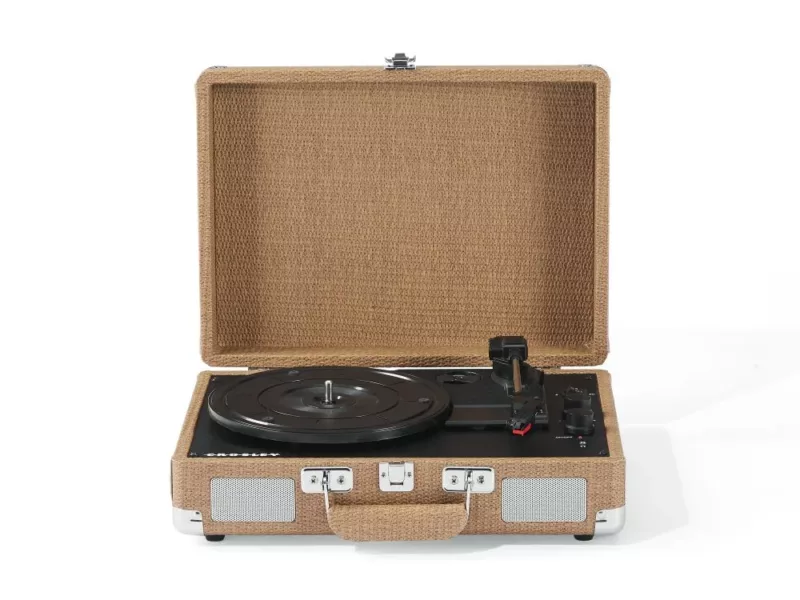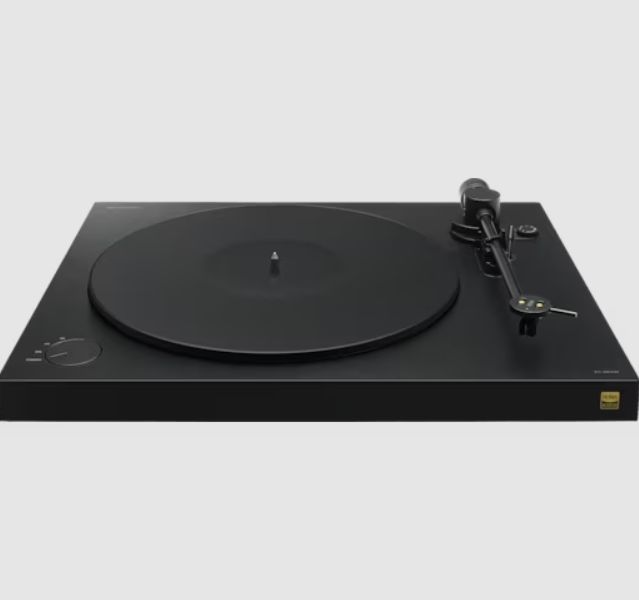It took me a long time before I came across the ‘illusive’ 10 inch record in a pawn shop. It was only until I got home that I wondered “can my record player even play a 10 inch vinyl?!” and “what’s so special about a 10 inch record anyway?”. This blog details everything you need to know about 10 inch records and how to play them on your record player.
So first and foremost….
What are 10 Inch Records?
10 inch records are the rarest size of vinyl record due to their unusual limitations in playtime. 7 inch records are mostly used for higher quality singles with up to 5 minutes playtime and 12 inch records are mostly used for full albums, with 20 minutes of playtime per side. 10 inch records offer a poor middle-ground between 7 and 12 inch records as they can only play a few songs.
Due to this being impractical for the average listener, and sales being far lower compared to 7 and 12 inch records, record companies began producing them less. As a result, most record players don’t even come with a setting to play 10 inch records but that doesn’t necessarily stop you from playing one on your record player.
Can I Play 10 Inch Records On My Record Player?
Although most record players aren’t built to play 10 inch records, you can still play them by manually moving the tone arm. However, if your tone arm doesn’t let you move it manually, and you have no built-in 10 inch size setting, then you cannot play 10 inch records. Doing so could break the tone arm of your record player.
Fortunately, the vast majority of record players won’t restrict you moving the tone arm manually meaning almost all record players can play 10 inch records.
So Why Aren’t Most Record Players Made To Play 10 Inch Records?
10 inch records are rarely produced so most record players don’t include a setting to play them to save on manufacturing costs. Most records are 7 or 12 inches so 99% of all record players have buttons to play these automatically.
Record players above $500 are more likely to have a built-in 10 inch record setting, largely because die-hard vinyl collectors are more likely to collect 10 inch records and be willing to pay for the luxury of playing them with ease.
What Other Sizes of Vinyl Are There?
Almost every vinyl record in production today are 7, 12 or (less commonly) 10 inches in size. These are the ideal sizes for playing high quality singles or full albums due to their playtime. However, there are other sizes in circulation, especially ones made in the 1930s…
16 Inch Records
16 inch records were produced exclusively for radio stations from the 1930s to 1950s as they had longer playtime than commercial records at the time, and greater quality to reduce unwanted surface noise. This made listening to the radio far more enjoyable and enabled radio stations to have high quality records to play messages from their sponsors and their own jingles. A better listening experience was arguably the best marketing tool for radio stations during this time so they proved to be the standard broadcast method.
16 inch records were largely impractical for commercial use however, as they were expensive to produce, did not fit on most record players in the home and involved different materials like aluminium, requiring extra care.
6 and 8 Inch Records
Uncommonly, 6 and 8 inch records were also produced but mostly for specialist transcripts such as nursery rhymes, theme songs and even children’s stories. Because these recordings required less playtime and audio information than standard songs, they didn’t need as much space so they were fit-for-purpose.
Pocket Discs or 4 Inch Records
Often seen as fun gimmicks and made in Japan, 4 inch records, or “pocket discs” are miniature vinyl’s capable of playing just around 2 minutes of standard quality audio per side. They were made as novelty gifts as they could be sent in the post in envelopes and were even sold in vending machines!
Other Vinyl Sizes
Almost every size of vinyl you can think of has been made and can be found in record shops around the world, but these are VERY rare. Records made in unusual sizes are mostly produced as gimmicks or as one-off collectables because they have to be played manually, making them impractical for the average listener. However, for collectors they can make for a fun and unique addition.
How many songs can a 10 Inch Record Play?
10 Inch records can typically play between 9 and 13 minutes of audio per side. This is around 3-4 songs with the exception of some jazz and classical songs which have much longer playtimes.
The table below shows how many songs can be played on each size and speed of vinyl. We go into more detail about playing other record sizes in this blog.
* this table goes by the same average song length of between 3 and 4 minutes but will vary depending on genre and the type of song such as interludes.
| Record Size | RPM | Average Playtime | How Many Songs Per Side |
| 7 Inch | 33 1/3 RPM | 7 Minutes | 1-2 Songs |
| 45 RPM | 5 Minutes | 1 Song | |
| 78 RPM | 1-2 Minutes | 1 Short Song Maximum | |
| 10 Inch | 33 1/3 RPM | 13 minutes | 3-4 Songs |
| 45 RPM | 9-10 Minutes | 2-3 Songs | |
| 78 RPM | 7-8 Minutes | 2 Songs | |
| 12 Inch | 33 1/3 RPM | 20 Minutes | 5-6 Songs |
| 45 RPM | 14 Minutes | 3-4 Songs | |
| 78 RPM | 9-10 Minutes | 2-3 Songs |
Do 10 Inch Records Have Better Quality Sound?
10 inch records don’t necessarily have better sound quality than other records. This depends on the RPM they were recorded at, and whether the song was produced specifically for that RPM too.
A 45 RPM 10 inch record should have better quality than any 33 1/3 RPM record and the same for a 78RPM 10 inch record. However, as you can see from the table above, higher quality 10 inch records suffer from greatly reduced playtime, only able to play 2-3 songs per side. This makes them highly impractical for the average listener, needing to change sides every 7-10 minutes.
The reason high quality 7 inch records are more popular, is because of the novelty of having 1 song per side in the highest quality format as opposed to a few.
Are 10 Inch Vinyl’s Rare and Worth Money?
While 10 inch records are certainly rare to find, it will usually only be valuable if other factors apply to it too. Below is a summary of the main things to look out for when checking if your 10 inch record is worth money! (please note, this is by no means an exhaustive list and you should always consult vinyl experts)
- Rarity of the recording
- Part of a small, very limited edition run
- Unique front cover
- An Unusual RPM
- If it was an ‘accidental’ print with mistakes on it
- Artist popularity
- Year the record was made
- Whether the band or artist is still alive
- If it was one of the first print’s, such as the manufacturer printing the first 1000 in one location before printing the rest elsewhere
We go into more detail about this in our other blogs but this last point bears special consideration. For example, some of the most collectable, and valuable, 10 inch records are original jazz songs manufactured by the label Blue Note if they bear their original Lexington Avenue address. This is because it is proof that the record is one of the very first made.
What Size Record Should I Buy?
The choice of what size record to get comes down to two factors; whether you are a collector or a listener.
Collector
If you are looking to purchase new records mostly to add to your collection, instead of everyday listening then it largely depends on what you already have. For example, you may prefer to have a collection of higher quality singles (7 inches) from the same album or prefer to have uncommon sizes to make your collection stand out (10 inches)
Listener
When buying records for everyday use or less, you should buy 7 inch records to listen to 1 high quality song per side, or 12 inch records if you want the convenience of listening to a full album.
Conclusion
You should be able to play a 10 inch record on your record player by manually moving the tone arm onto the start of the record. This applies to any sized record too. If you want the luxury of playing 10 inch records automatically, you should look out for record players with 10 inch buttons built-in to them.



